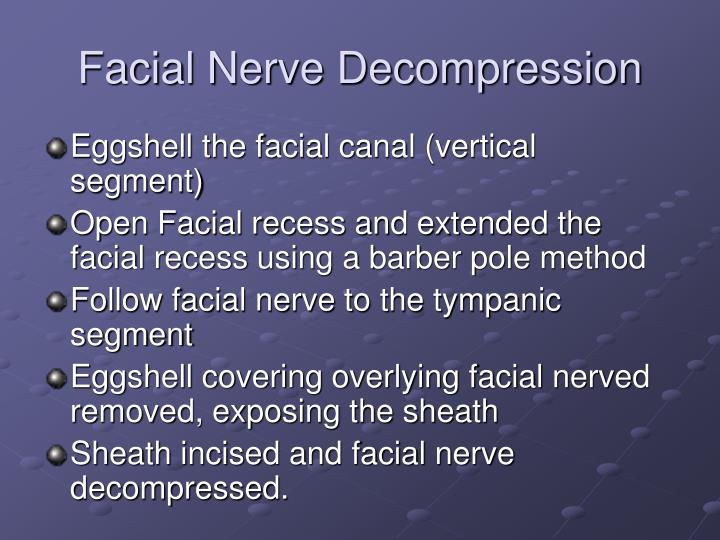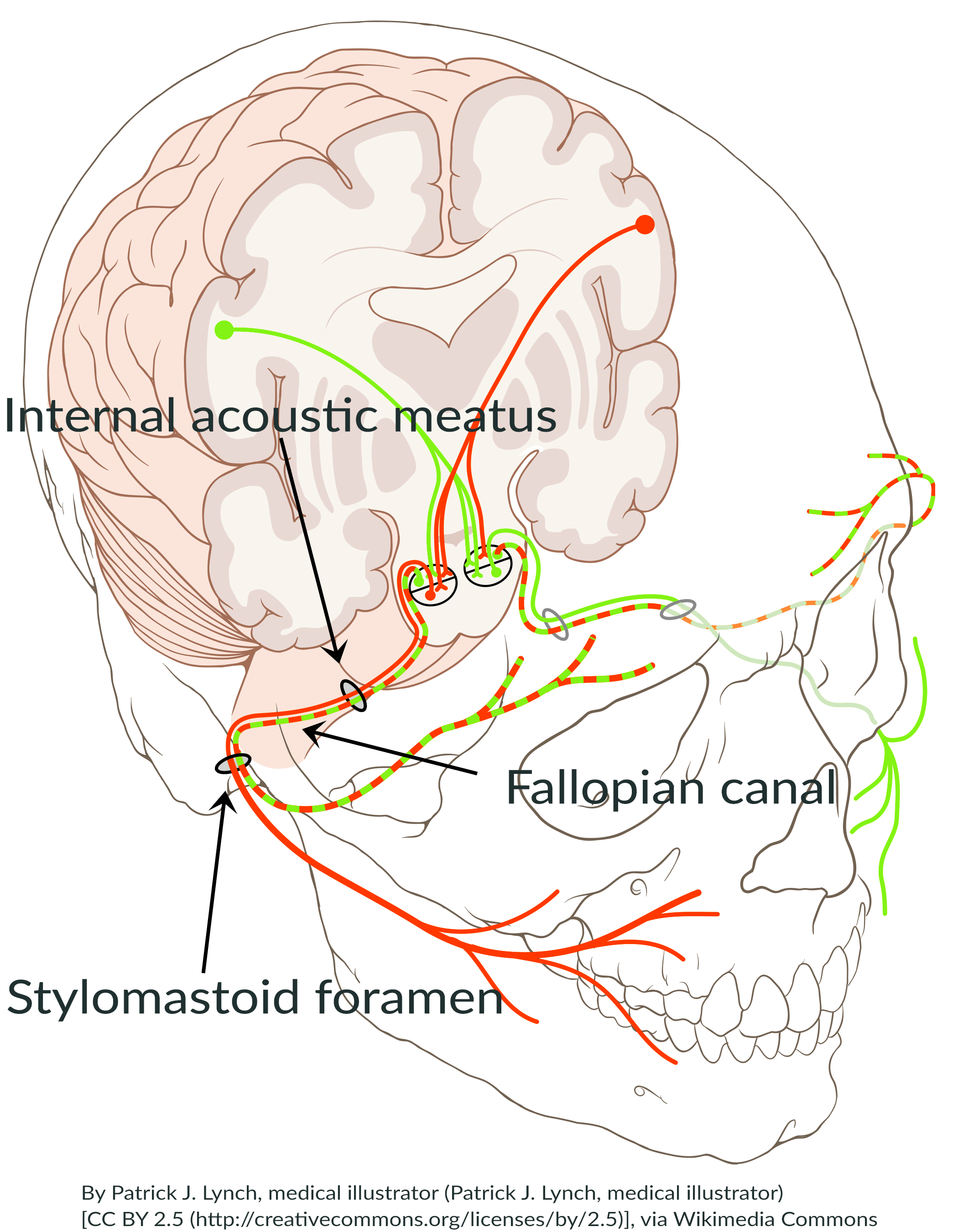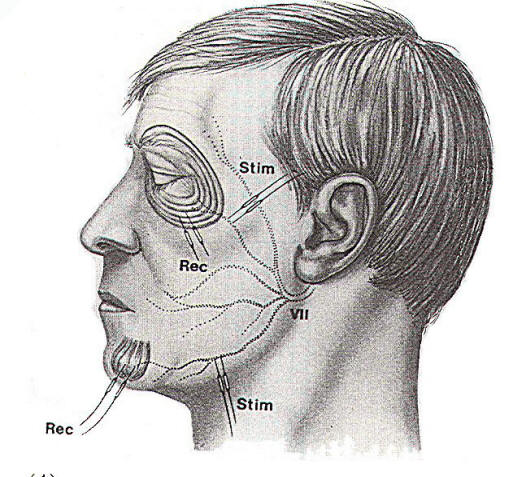
Overview Hemifacial spasm (HFS) is a neuromuscular disorder that is characterized by paroxysmal bursts of involuntary tonic or clonic activity occurring in the muscles innervated by the facial nerve (the seventh cranial nerve).
Facial nerve paralysis is a common problem that involves the paralysis of any structures innervated by the facial nerve.The pathway of the facial nerve is long and relatively convoluted, and so there are a number of causes that may result in facial nerve paralysis.
Trigeminal neuralgia causes facial nerve pain. Trigeminal neuralgia develops in mid to late life. The condition is the most frequently occurring of all the nerve pain disorders.


This information is designed to help patients talk to their neurosurgeons about their facial pain. It is not intended to give specific treatment guidelines.



Intraoperative Management of Venous Compression. Negative Exploratory Surgery. If careful circumferential inspection of the nerve does not disclose an offending vessel, I use fine forceps and gently pinch the trigeminal nerve.
Facial twitch or hemifacial spasm (HFS) is an involuntary twitching or contraction of the facial muscles on one side of the face. Symptoms, causes, diagnosis, treatment

Michigan Ear Institute has been at the forefront in developing treatment modalities for facial nerve dysfunction including Bell’s palsy and traumatic facial nerve paralysis.

Surgical, medicinal, and alternative methods for facial pain afflictions like trigeminal neuralgia, courtesy of experts from the Facial Pain Association

Neuropathy Pain, Nerve Compression, Foot Drop, Peroneal Palsy, Pelvic Pain, Groin Pain, Intercostal Nerve Pain, Joint Pain, Knee, Shoulder, Ankle, Wrist, Elbow

Microvascular decompression (MVD) is a surgical procedure that relieves abnormal compression of a cranial nerve.